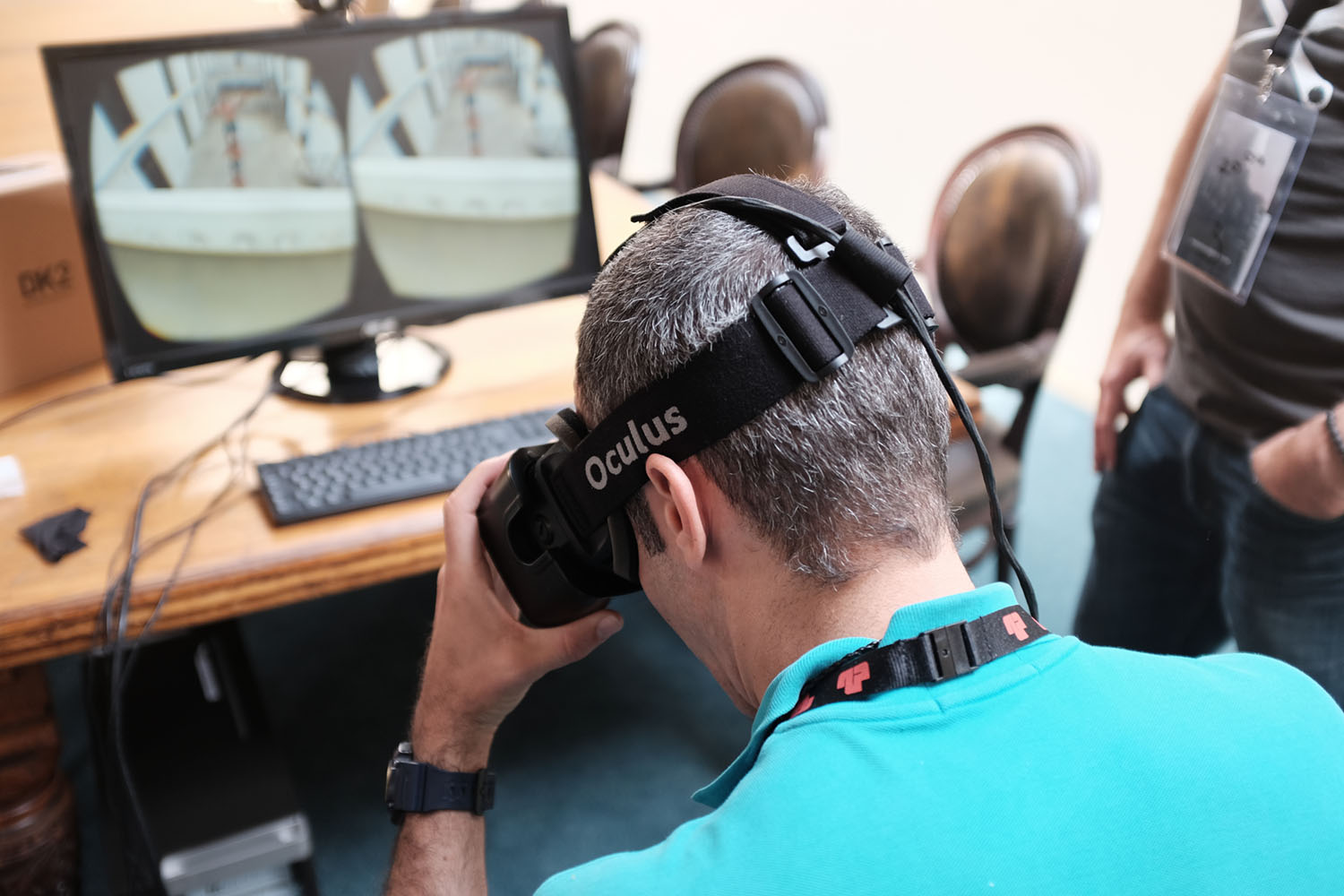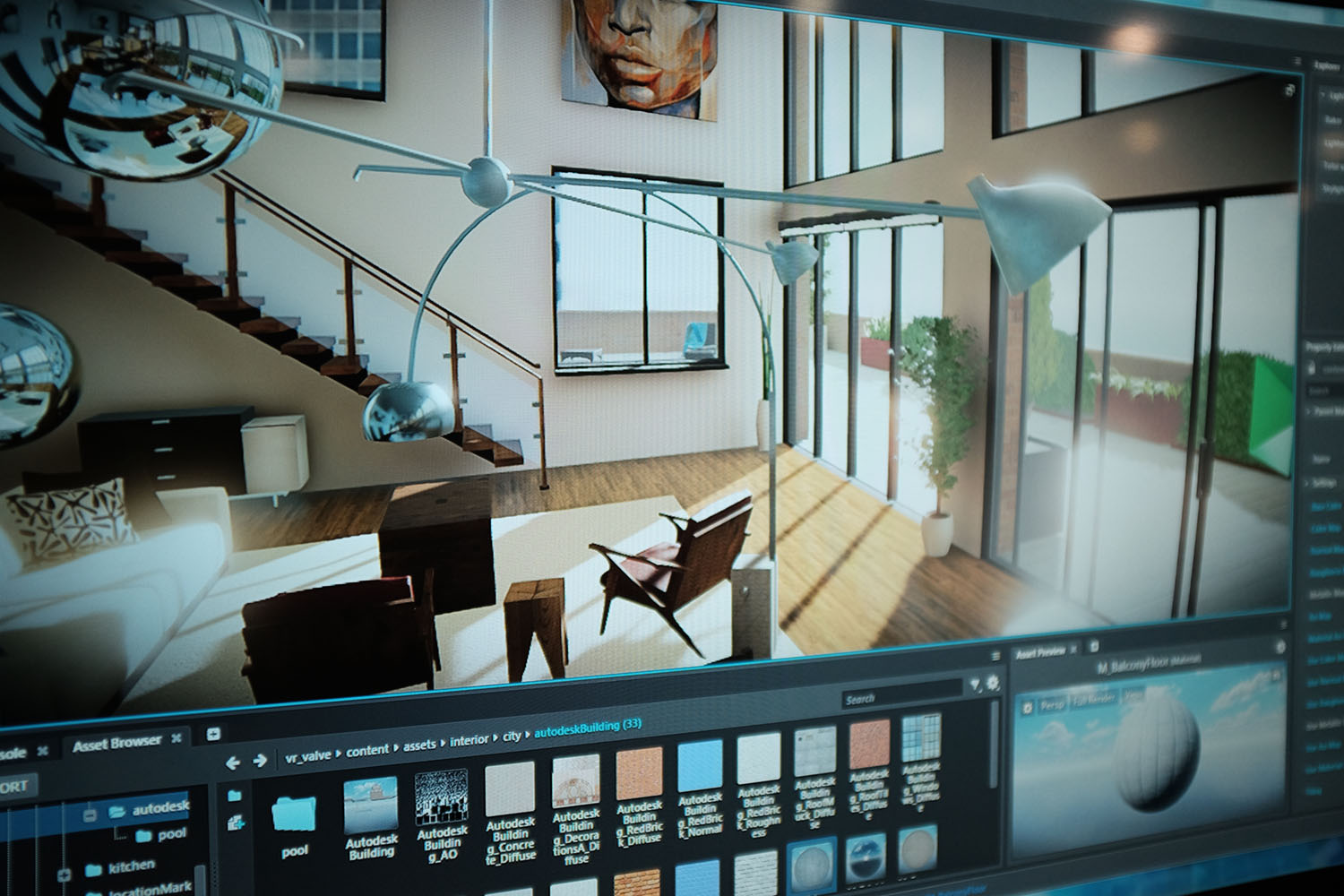
Other
Virtual Reality in Arch Viz - Hype or Reality?
The Resurgence of VR
Anyone who has been around the visualization industry a while knows VR is certainly not new. In fact the HMDs (Head-Mounted Displays) as we know them today came about in the 1960s and saw a somewhat disastrous resurgence in the 1990s in the consumer space.
When the hype started all over again a few years ago with the release of Oculus’ DK1 (Developers Kit 1) Kickstarter, I have to admit I viewed it with a healthy amount of skepticism. So much so, it was not until mid 2013 that I even bothered to give it a try, despite having walked passed crowded Oculus booths a number of times in my travels to events around globe. Like so many technologies in the 3D/CG field I’ve seen over the last 21 years, I chalked the DK1 up to yet another soon to fail technology - right there next to 3D televisions. What I am witnessing in our own field has really taken me a bit by surprise and it seems this is a technology that is not going away any time soon. Its path is certainly not paved in gold, but I think it actually stands a chance this time!
Architecture is generally one of the most technology laggard fields around, so when I started seeing around 50% of the architectural firms and visualization studios purchasing DK1’s, I was a bit taken aback. What was it this time that made this not only a seemingly viable technology, but a technology that even the most technology averse companies were wanting to purchase and put into practice?
Throughout 2014 and into mid 2015 I slowly watched more and more companies experimenting behind the scenes. Many not even knowing how it would be used in production. By late 2015 a critical mass of new technology companies jumping behind the VR movement, coupled with actual internal and external client projects successfully being developed within our own field, appears to have been a recipe for success. I’ve even spoken to one company who told me the revenue they are currently generating on the VR side of the business is surpassing their bread and butter imagery work in terms of profitability.
NVIDIA VR Experience Pods at GTC

NVIDIA VR Experience Pods at GTC - line ups for hours.
Why VR, Why Now?
Unless you’ve tried VR it’s really hard to put into words why it has so many people excited and why it feels so amazing. Two words that I think describe its usefulness in architecture are: Scale and Presence. Two things that also neatly sum up what we feel when we experience architecture in the real world. This ability to experience a space we can’t visit, or one that does not yet exist, is the basis of nearly everything professionals in the field of architectural visualization do on a daily basis, so really VR is quite complementary and takes what we do to another level.
So why is VR having a resurgence now and why might it be here to stay this time? Quite simply the technology required for us to start to developing near reality experiences did not exist until very recently. Even as recently as ten years ago we did not have a 1080p display small enough to fit an HMD. We can thank the mobile phone market for pushing that forward. Another big catalyst for VR has been the advancements of real-time computer graphics compute power.
Both NVIDIA and AMD have announced video cards that are orders of magnitude faster than their predecessors. Companies like Oculus, HTC, Microsoft, and dozens more are simply packaging an ecosystem and hardware in a way that can leverage these advancements in a way that supports VR experiences.
Oculus DK2 at the End User Event
Microsoft Hololens at the End User Event
Challenges Ahead
While the business cases and initial successes with VR in architecture are positive, there remains many outside forces that will dictate whether VR will stay. AR (Augmented Reality) HMDs have a long and successful presence in the industrial/commercial space, but VR, for now, is primarily being targeted to the consumer space, and it’s a bit of a chicken or the egg scenario at the moment. People don’t buy HMDs en-masse unless there are titles, and game developers don’t develop big titles unless there is a large enough market to support it. Which brings us to the number one issue I see with VR HMDs in the consumer space - price.
By far the best VR experience is currently the HTC Vive, but at $800 that is far from affordable at the consumer level, and that’s just the HMD. You are going to spend at least another $2,000 for a PC capable of driving a VR experience, which puts this out of reach to all but the most avid gamers and professionals. NVIDIA recently estimated that less than 1% of all PCs on the market in 2016, will be able to run a VR experience. So the question now becomes, how long are these VR hardware developers willing to wait for an audience and how big does that audience need to be for it to be profitable? And more importantly, will the commercial side of the industry factor into their equations? HTC just recently announced a Vive Business Edition, so it’s clear they understand the market exists, but is it enough?
Leap Motion gesture control in VR
Autodesk Stingray
From a form factor point of view, size, weight, and untethered experience are all high on the list of improvements that need to happen, in addition to increased screen resolution.
From a technology stand point of view, all of the pieces of the puzzle are there, but the business model and hardware refinements are far from resolved. I think the next 24-36 months will be very telling. Gartners, an industry analysis company that plots new technology trends, places VR just exiting the Trough of Disillusionment with a 5-10 year horizon to reach the Plateau of Productively. I had a chance to speak to one of the analysts who helps determine where these technologies fall on the graph and I commented how I was surprised not to find it at the top of the hype curve. He said, they debated if they should “reset the clock” and place it there, however the current position reflects the decades of work that came before, even though the industry was literally in a holding pattern for 20 years.
Gartners Emerging Technology Hype Cycle 2015
How is it being used now?
It’s still very early days, but I am seeing new companies popping up almost daily announcing they are working with VR on client projects. Architectural firms like Gensler are using it to gain buy-in on design proposals from their clients and to help internal design discussions. Some visualization companies are taking existing projects and porting them to VR and to help developers better understand their spaces.
Over the coming months, our plan is to develop an entire series of articles around the use of VR/AR/MR in architectural visualization, including in depth discussions about what it means from a business perspective and what opportunities exist, and how this technology might impact our field.
In the interim, we’d love to know what you think, what you’d like to see, and to tell us what your plans are for VR/AR/MR in your business in 2016 and 2017.
We’ve put together a very quick survey below and will be publishing the results as soon as we get a good number of results. Hopefully within the next few weeks. Only takes 1-5 minutes to complete.













About this article
Why is VR having a resurgence now and why might it be here to stay this time?











